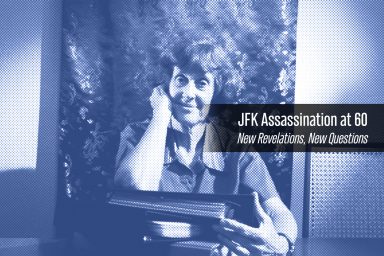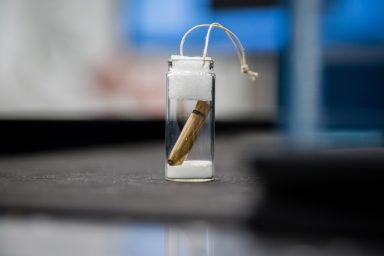A series of serious discrepancies in the prosecution’s case against Tsarnaev should be raising the eyebrows of the mainstream media.
 The prosecution pulled a couple of astonishing 180°s in the Dzhokhar Tsarnaev trial Thursday. The fancy footwork actually had the government denying evidence it once claimed to have possessed. In fact, in one instance, the prosecution managed to pull a full 360°.
The prosecution pulled a couple of astonishing 180°s in the Dzhokhar Tsarnaev trial Thursday. The fancy footwork actually had the government denying evidence it once claimed to have possessed. In fact, in one instance, the prosecution managed to pull a full 360°.
It started when one witness, FBI Supervisory Agent Michael Knapp—who works with the Terrorist Explosive Device Analytical Center (TEDAC) in Quantico, Virginia—testified that the bombs allegedly made by Tamerlan and Dzhokhar Tsarnaev were “not that sophisticated.” He also stated that investigators found explosives residue in the Tsarnaev brothers’ Norfolk Street, Cambridge, apartment and in their vehicles.
However, both these assertions directly contradict what the public has been led to believe since the April 2013 Boston Marathon bombing—based not only on what law enforcement told the media, but also on the prosecution’s own statements. Despite these glaring discrepancies, Knapp’s testimony Thursday went unchallenged by the defense.
The reason for the defense’s silence seems clear. With the prosecution trying to paint the brothers as “lone wolves” who acted without any outside help, the defense has focused on saving Dzhokhar from the death penalty by blaming the defendant’s actions on older brother Tamerlan. As a result, both sides appear content to ignore the possibility that others were involved in the planning or facilitation of the bombing—even though the government once contended that this might be the case.
Thursday’s testimony is a case study in how language can be twisted to gain a legal advantage, while leaving potentially significant matters of fact unexplored.
Let’s take a look at the prosecution’s latest assertions, one at a time.
The Bombs: Sophisticated or Simple?
The first issue concerns the design of the bombs that exploded on Boylston Street on April 15. 2013. According to Knapp’s Thursday testimony, the bombs were relatively simple devices. Although he didn’t say it directly, he implied that anyone with an Internet connection could have pulled off the Boston bombing.
But that assertion contradicts the opinion of numerous experts, and of investigators directly connected to this case.
Not long after the bombing, former CIA operative Bob Baer, told CNN:
The police are looking at this as a sophisticated device, which does not precisely follow the internet plans that are in Inspire magazine… In order to have them foolproof, you need a bomb maker to do it, or someone with a lot of practice. These things just don’t go off with that consistency that they managed to make happen.
About a year later, retired Army Lt. Gen. Mike Barbero, former director of the Joint IED Defeat Organization (JIEDDO), told ABC News:
For a ‘novice’ pair of IED builders and emplacers, for them to work as they did, to be effective, that indicates to me a level of sophistication that they received some sort of training from somewhere.
Barbero headed JIEDDO at the time of the marathon attacks. JIEDDO works directly with Knapp’s TEDAC, an interagency organization that scrutinizes explosive devices for various government agencies, including the military.

The prosecution has changed its position on the level of sophistication of the bombs used in Boston.
Gotcha!
When justifying why FBI agents questioned Dzhokhar Tsarnaev for two days before reading him his Miranda rights, the prosecution pointed to the sophistication of the bombs, which led them to believe there were others involved.
That, in turn, allowed the government to interrogate Tsarnaev without a Miranda warning under the “public safety exception,” on the assumption that more attacks might be imminent .
The government’s May 2014 motion reads:
The Marathon bombs were constructed using improvised fuses made from Christmas lights and improvised, remote-control detonators fashioned from model car parts. These relatively sophisticated devices would have been difficult for the Tsarnaevs to fabricate successfully without training or assistance from others.
Until Thursday’s testimony by FBI agent Knapp, it was assumed that the brothers must have had help in either designing or constructing the bombs. Investigators said Tamerlan could have received training while he was overseas in Dagestan, a Russian state with a jihadi underground, for six months in 2012.
But the prosecution had reason to stay away from this scenario, because it would play into the defense’s strategy of showing Tamerlan as mastermind and Dzhokhar as weak-willed dupe. So Knapp’s testimony on Thursday portraying the Marathon bombs as “unsophisticated” wrote any need for “explosives training” out of the case.
And since Dzhokhar’s lawyers have admitted his culpability, the defense was happy to go along with any story that reinforces Tamerlan’s central role. What gets lost in this complicity of silence is the possibility that the Tsarnaevs had help in carrying out the bombing—a possibility that the establishment media should be pursuing, since it could lead to answers about who might’ve been providing that help.
The Black Powder: Now You See It, Now You Don’t. Or Do You?
The other issue raised by Thursday’s testimony concerns the whereabouts of explosives powder (gunpowder) residue. Investigators seemed to have had a hard time deciding whether there were traces of powder in the Tsarnaevs’ Cambridge apartment. So far, they have reversed themselves three times over the course of the investigation—twice in official proceedings.
A month after the bombing, a “source close to the investigation” told CNN that explosives residue had been found in the small Norfolk Street apartment. The report said the residue “turned up in at least three places,” namely the kitchen table, the kitchen sink and the bathtub.
But a year later, in the same government motion that claimed the brothers likely had “training or assistance from others,” prosecutors argued that there were “virtually no traces of black powder” in the Tsarnaev apartment. This would suggest that the bombs were built elsewhere, possibly in an unidentified safe-house provided by those never identified “others.”
It’s worth noting that this claim was put forward to justify the failure of law enforcement officers to read Dzhokhar Tsarnaev his Miranda rights while interrogating him in the hospital. (Even before the interrogation began, authorities were telling residents in and around Boston that they could be confident “the threat has been removed.”)
So after informing the court in May 2014 that there was no explosives residue in the Tsarnaevs’ apartment, on Thursday Special Agent Knapp testified that there was evidence of explosives residue—in both the apartment and in the Tsarnaevs’ cars.
Is U.S. Hiding Something?
The pattern seems clear: the hide-and-seek residue makes its appearance when necessary to prove the brothers were the sole perpetrators of the bombing, thereby diverting public attention from the role others may have played in the attack.
But when it serves the government’s purpose to raise the specter of imminent danger from shadowy accomplices, the residue conveniently disappears.
Then, presto-chango, it’s back when any hint of accomplices might aid the defense in warding off the death penalty.
In other words, the government has been allowed to have its cake and eat it too, while the defense, for its own reasons, has not questioned these reversals, And the press—so far—seems not even to have noticed them.
The Public Interest
The whole purpose of a court trial is to decide the guilt or innocence of the accused. But in a case involving the worst terror attack on American soil since 9/11, the public may well want to ask: are there valid trails of evidence leading to the involvement of others in the bombing—trails of evidence that are being ignored, or deliberately suppressed, in the legal games being played in Boston?
If no one in authority, or in the media, even tries to look deeper into this tragedy, we may never get to the bottom of how, where and by whom the bombs that killed three and injured more than 260 people were constructed.
And that failure would be compounding the tragedy.



